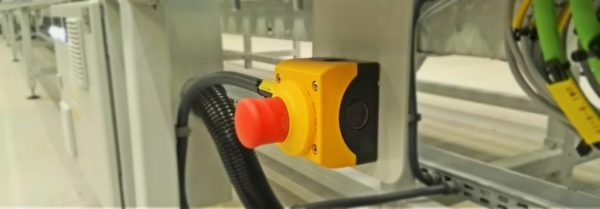
When working with machinery, the most important thing to remember is safety. Moving machinery can cause injuries in many ways. People could be struck and injured by moving parts of machinery. Belts and rollers can cause body parts to become drawn in or trapped.
If there are sharp or jagged edges on machinery, these may cause cuts and severing injuries. Rough surface parts may cause friction or abrasion.
People may be crushed by a machine, this may be caused by moving parts of the machinery or a fixed part of the machine. Parts of the machine, materials and emissions (such as steam and water) can be hot or cold enough to cause burns or scalds, electricity can also cause electrical shock and burns. Machines sometimes develop faults leading to injuries or if machinery is used incorrectly through inexperience or lack of training this may also lead to people becoming harmed.
Before you are considering starting to use any machinery you need to think about what risks may arise and how these can be avoided in the future. When working with machinery make sure you check that the machine is complete with all parts in working order and free from any defects. Ensure the machinery is regularly maintained. Maintenance may require thorough investigations of any parts where deterioration would cause a risk.
Before starting any jobs with the machinery be sure to select the right machine for the job. Do not leave unattended machines where they would be considered a risk to anyone. All new machinery should be CE marked and full up to date instructions of how to operate. CE marking is a certification mark that specifies conformity with health, safety and environmental standards for products sold within the EEA (European Economic Area).
The CE marking is also the manufacturers declaration that the product meets the requirements of the EC directives. A directive is a legal act of the European Union.
If machines are being controlled by programmable electronic systems, changes to any programmes should be carried out by a competent person, someone who had the necessary skills, experience and knowledge to be able to carry out the work safely. Ensure all control switches are clearly marked and legible. Have all emergency stop controls within easy reach.
Some workers who new to this field of work may need extra instructions and supervision for example young people or people with disabilities. Supervisors must be fully trained and competent to be effective, they may need extra specific training. Ensure the work area around the machinery is wet lit and kept clean and tidy and free from obstructions or trip hazards.
Machinery safety should be on your mind from the beginning of a job right up until the end. Before starting any job, remember to pre-plan which machinery is most suitable for that specific job. It is also important to check that any people in the vicinity aren’t going to be affected by the movement of the machine, noise or dust.
Ultimately remember your own safety is just as important as others.
Marc Lloyd














